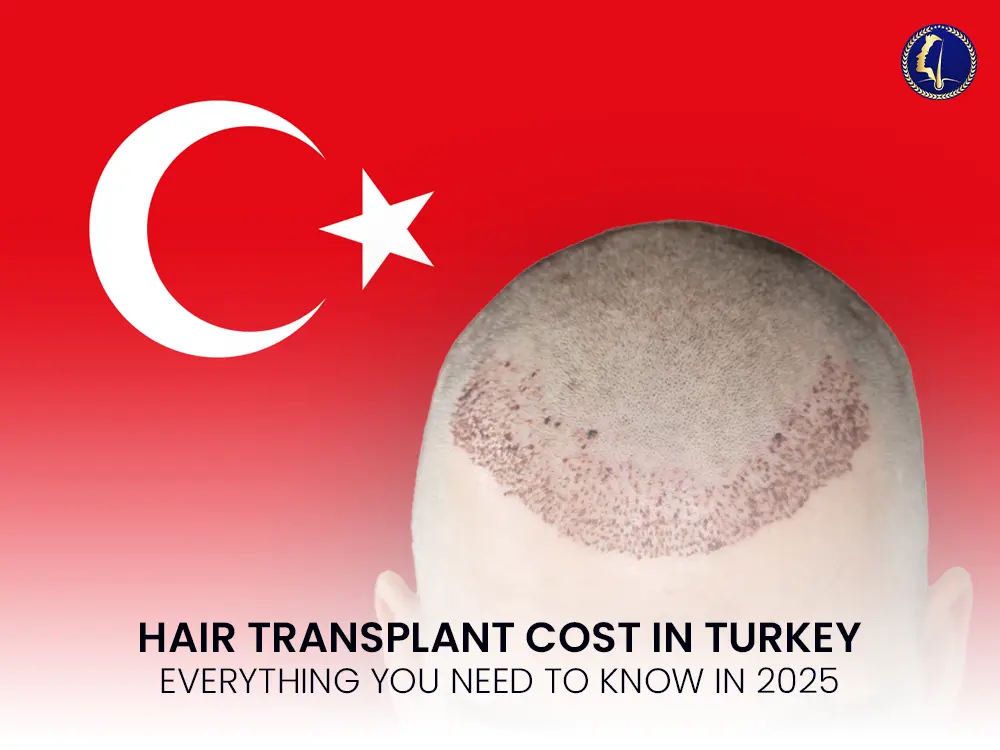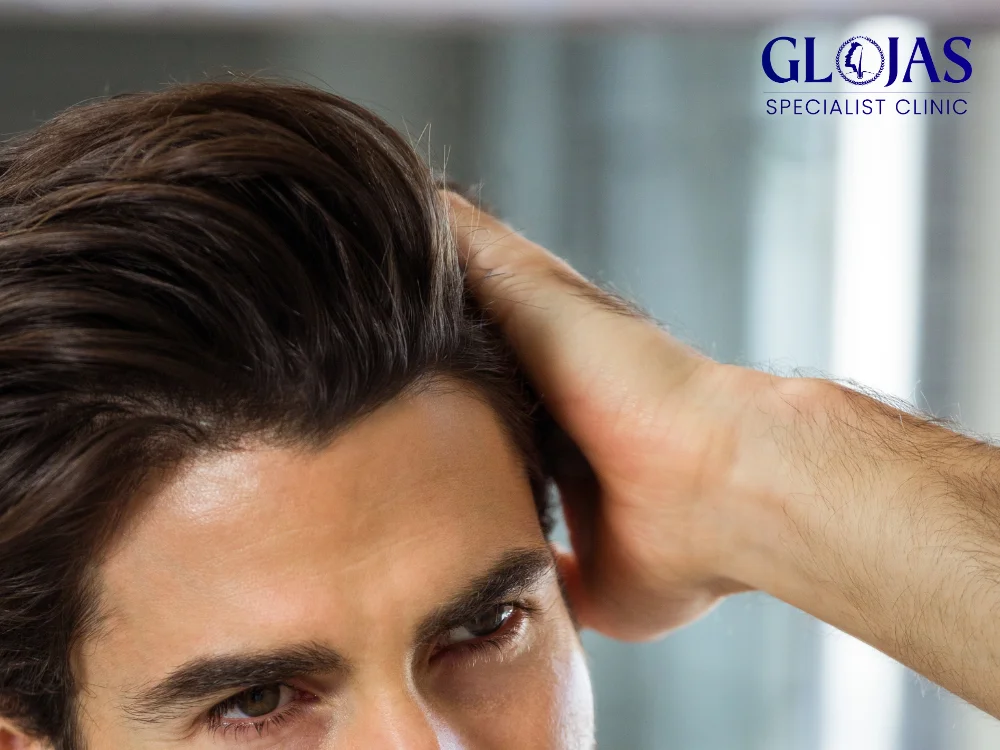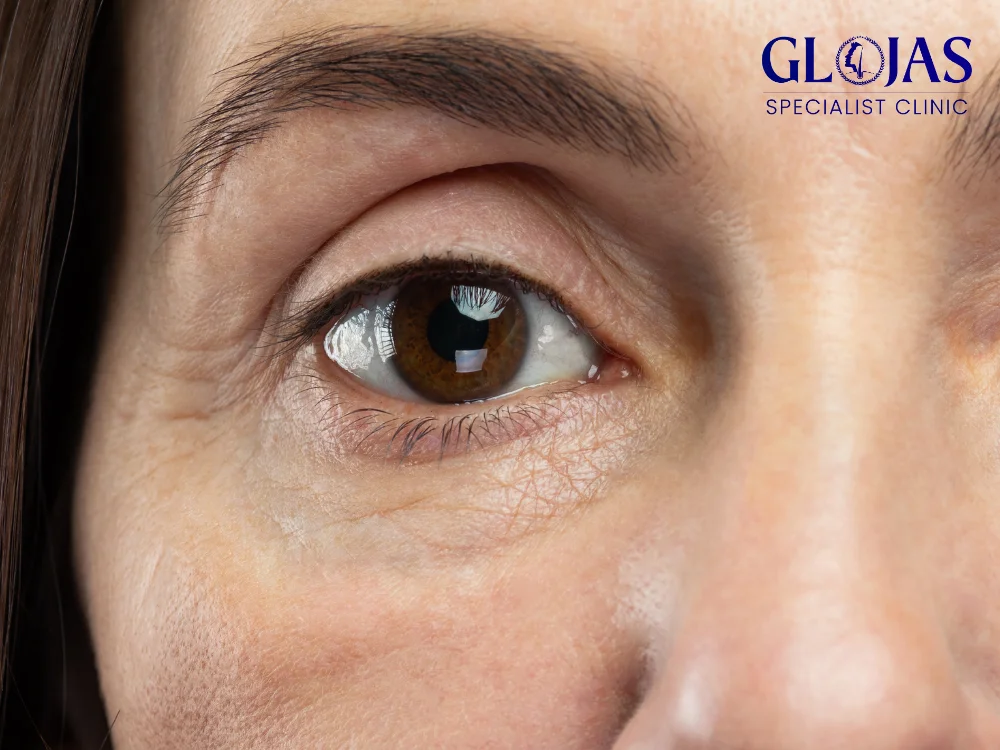Hair Transplant Cost in Turkey (2025): Complete Pricing & Graft Guide

Hair Transplant Cost in Turkey (2025) Turkey remains one of the top destinations globally for hair restoration in 2025, known for offering high-quality procedures at significantly lower prices than clinics in the US, UK, or Europe. But how much does a hair transplant really cost in Turkey, and what factors influence the final price? This guide breaks down the average cost by graft count, explains the key price drivers, and shows how Turkey compares to other popular medical tourism hubs. Average Hair Transplant Cost in Turkey In 2025, the average cost of a hair transplant in Turkey ranges between USD $1,500 to $6,000, depending on the number of grafts required and the technique used (such as FUE, Sapphire FUE, or DHI). Prices vary based on: The number of grafts needed Technique and tools used (standard FUE vs. Sapphire or robotic FUE) Clinic location and reputation Surgeon’s experience and credentials Whether the clinic offers all-inclusive medical tourism packages Most clinics offer fixed package pricing that includes the procedure, hotel stay, airport transfers, and post-op medications. Hair Transplant Cost by Graft Count (2025 Rates) Number of Grafts Estimated Cost (USD) Recommended For 1,500 Grafts $1,500 – $2,200 Minor hairline or temple restoration 2,000 Grafts $1,800 – $2,800 Moderate hair thinning or early balding 2,500 Grafts $2,000 – $3,500 Larger frontal or crown coverage 3,000 Grafts $2,500 – $4,200 Advanced recession or diffuse thinning 4,000+ Grafts $3,500 – $6,000 Full head restoration or high-density Note: Always verify what’s included in the price. Top clinics often include hotel accommodations, transfers, translator services, and follow-up care. Cost Comparison: Turkey vs. Other Countries Country Average Hair Transplant Cost (USD) Procedures Offered Turkey $1,500 – $6,000 FUE, DHI, Sapphire FUE UK $7,000 – $12,000 FUE, DHI USA $10,000 – $15,000+ FUE Thailand $3,500 – $7,500 FUT, FUE India $1,200 – $3,500 FUE, DHI Turkey remains a top choice due to the balance between price and internationally recognized quality standards. Key Factors That Affect Hair Transplant Pricing in Turkey Number of Grafts RequiredThe more hair grafts you need, the longer the surgery and higher the cost. Technique UsedTechniques like Sapphire FUE and DHI are more expensive due to precision tools and faster recovery. Surgeon’s Experience and CertificationsSurgeons with international training or high-profile client portfolios may charge premium fees. Clinic Reputation and FacilitiesJCI-accredited or internationally recognized clinics often offer better quality and safety, reflected in pricing. What’s Included in the PackageSome clinics bundle the procedure with hotel, transport, medications, and even translators. Others charge separately. Is a Hair Transplant in Turkey Worth It? Yes, for many patients it is. Turkey offers a unique combination of affordability, surgical expertise, and convenience. Thousands of patients from Europe, Asia, and the Middle East travel to Turkey every year for hair restoration procedures, often achieving world-class results for a fraction of the price elsewhere. When performed by a qualified surgeon at a reputable clinic, hair transplants in Turkey offer permanent, natural-looking results with proper post-operative care. Before You Book: Checklist Research at least three clinics and compare packages Verify the surgeon’s experience and certifications Review before-and-after galleries Ask for a full breakdown of what is and isn’t included in the price Look for clinics offering follow-up support after you return home FAQs- Hair Transplant Cost In Turkey 1. How much does a hair transplant cost in Turkey in 2025? Answer:In 2025, the average cost of a hair transplant in Turkey ranges from USD $1,500 to $6,000, depending on the number of grafts required, the clinic’s reputation, and the technique used. Many clinics offer package deals that include hotel accommodation, airport transfers, and post-op care. 2. Why is Turkey so affordable for hair transplants? Answer:Turkey offers lower hair transplant costs due to lower labor and operational expenses, government support for medical tourism, and a favorable currency exchange rate. Despite the affordability, many Turkish clinics maintain high international standards in surgical procedures and patient care. 3. Does the quoted price usually include everything? Answer:Reputable clinics in Turkey often provide all-inclusive packages that cover the procedure, hotel stay, airport transfers, medications, and translator services. However, it’s essential to ask for a detailed cost breakdown to avoid unexpected charges. 4. How many grafts do I need, and how does that affect the cost? Answer:The number of grafts you need depends on the extent of your hair loss. Mild cases may require 1,500 to 2,000 grafts, while full restoration could need 4,000+ grafts. Since clinics typically charge per graft, more grafts mean a higher overall cost. 5. Is the quality of Turkish hair transplants comparable to Western countries? Answer:Yes. Many top Turkish clinics are internationally accredited and use the latest technologies such as FUE, Sapphire FUE, and DHI. Surgeons in leading clinics have extensive experience and training, often matching or exceeding the quality found in Western countries.
Harga Implan Rambut: Biaya, Prosedur, dan Keuntungan

Implan rambut semakin populer sebagai solusi permanen bagi mereka yang mengalami kebotakan atau penipisan rambut. Namun, banyak orang bertanya-tanya, berapa sebenarnya harga implan rambut? Biaya prosedur ini bisa sangat bervariasi tergantung pada beberapa faktor utama, termasuk teknologi yang digunakan, pengalaman dokter, dan jumlah folikel rambut yang ditransplantasikan. Dalam artikel ini, kita akan membahas harga implan rambut secara mendetail, termasuk faktor-faktor yang mempengaruhi biaya, metode terbaik yang tersedia, serta keuntungan dan risikonya. Faktor yang Mempengaruhi Harga Implan Rambut 1. Metode Transplantasi Rambut Ada beberapa metode implan rambut yang umum digunakan, dan masing-masing memiliki biaya yang berbeda: FUT (Follicular Unit Transplantation): Metode ini relatif lebih murah karena menggunakan strip kulit kepala yang diambil dari area donor. FUE (Follicular Unit Extraction): Lebih mahal dibandingkan FUT karena melibatkan ekstraksi satu per satu folikel rambut untuk hasil yang lebih alami. DHI (Direct Hair Implantation): Metode terbaru dengan harga tertinggi, karena menggunakan alat khusus yang memungkinkan penanaman rambut lebih presisi. 2. Jumlah Folikel Rambut yang Ditransplantasikan Semakin banyak folikel yang dibutuhkan, semakin mahal biayanya. Biasanya, klinik mengenakan tarif per 1.000 graft (folikel rambut), dengan harga berkisar antara Rp10 juta hingga Rp50 juta. 3. Pengalaman dan Kredibilitas Dokter Dokter dengan pengalaman lebih dari 10 tahun cenderung memasang tarif lebih tinggi dibandingkan dokter pemula. Memilih dokter yang berkualitas memastikan hasil yang lebih baik dan minim risiko. 4. Lokasi Klinik Harga implan rambut di Jakarta bisa lebih tinggi dibandingkan di daerah lain karena biaya operasional yang lebih besar. Sementara itu, beberapa orang memilih melakukan implan rambut di luar negeri seperti Turki, yang menawarkan harga lebih kompetitif. Estimasi Harga Implan Rambut di Indonesia dan Luar Negeri Berikut adalah perkiraan harga implan rambut berdasarkan lokasi: Lokasi Harga Perkiraan Jakarta Rp15 juta – Rp50 juta Surabaya Rp12 juta – Rp45 juta Bandung Rp10 juta – Rp40 juta Turki Rp20 juta – Rp35 juta Korea Selatan Rp30 juta – Rp70 juta Seperti yang terlihat di atas, harga bisa sangat bervariasi. Di luar negeri, harga mungkin lebih murah, tetapi pertimbangkan biaya perjalanan dan akomodasi. Prosedur Implan Rambut: Apa yang Harus Diketahui? 1. Konsultasi Awal Dokter akan menganalisis kondisi kulit kepala dan menentukan jumlah graft yang dibutuhkan. 2. Persiapan dan Anestesi Bagian kepala yang akan diambil folikelnya dicukur, lalu anestesi lokal diberikan untuk mengurangi rasa sakit. 3. Pengambilan dan Penanaman Folikel Metode FUT: Strip kulit kepala dipotong dan folikelnya diekstraksi. Metode FUE/DHI: Folikel diekstraksi satu per satu dan langsung ditanamkan. 4. Pemulihan dan Perawatan Pasca Operasi Setelah prosedur, pasien perlu mengikuti instruksi dokter agar hasilnya optimal, seperti menghindari paparan sinar matahari langsung dan tidak mencuci rambut selama beberapa hari. Keuntungan dan Kekurangan Implan Rambut Keuntungan: ✔ Solusi Permanen – Hasilnya bertahan seumur hidup.✔ Tampak Alami – Jika dilakukan oleh dokter ahli, hasilnya terlihat seperti rambut asli.✔ Bisa Mengembalikan Kepercayaan Diri – Mengatasi kebotakan dan membuat penampilan lebih muda. Kekurangan: ✘ Harga Mahal – Tidak semua orang mampu membayar biaya prosedur ini.✘ Proses Pemulihan Lama – Diperlukan waktu beberapa bulan hingga hasilnya terlihat sempurna.✘ Risiko Efek Samping – Seperti infeksi atau rambut tidak tumbuh sesuai harapan. Perbandingan Implan Rambut vs. Alternatif Lainnya Metode Harga Keawetan Hasil Implan Rambut Mahal Permanen Alami Obat Penumbuh Rambut Sedang Sementara Kurang Maksimal Wig/Toupee Murah Sementara Tidak Alami Dari tabel di atas, terlihat bahwa meskipun harga implan rambut cukup tinggi, prosedur ini adalah solusi paling efektif dalam jangka panjang. FAQ tentang Harga Implan Rambut 1. Apakah implan rambut bisa gagal?Ya, meskipun jarang terjadi, beberapa faktor seperti infeksi atau reaksi tubuh bisa menyebabkan kegagalan. 2. Berapa lama hasil implan rambut bisa bertahan?Jika dilakukan dengan baik, hasilnya bisa bertahan seumur hidup. 3. Apakah implan rambut sakit?Prosesnya dilakukan dengan anestesi lokal, sehingga tidak terasa sakit. Namun, setelah efek anestesi hilang, mungkin ada sedikit ketidaknyamanan. 4. Berapa lama pemulihan setelah implan rambut?Sekitar 7-14 hari untuk pemulihan awal, tetapi hasil akhir bisa terlihat dalam 6-12 bulan. 5. Apakah implan rambut bisa dilakukan untuk semua orang?Tidak, orang dengan kondisi medis tertentu atau yang tidak memiliki cukup donor rambut mungkin tidak bisa menjalani prosedur ini. 6. Apakah ada cara lebih murah untuk mengatasi kebotakan?Beberapa alternatif seperti obat penumbuh rambut atau perawatan PRP tersedia, tetapi hasilnya tidak seefektif implan rambut. Dengan mempertimbangkan harga implan rambut dan berbagai faktor di atas, Anda bisa menentukan apakah prosedur ini sesuai dengan kebutuhan dan anggaran Anda. Jika tertarik, pastikan memilih klinik dan dokter yang terpercaya untuk mendapatkan hasil terbaik.
Definitive Guide to Operation to Remove Eye Bags: 7 Key Things You Should Know

Eye bags are a common cosmetic concern that many people face as they age. These puffy, sagging areas beneath the eyes can give the appearance of tiredness or even add years to one’s face. Luckily, advances in cosmetic surgery offer an effective solution: an operation to remove eye bags. This procedure, also known as blepharoplasty, can rejuvenate the appearance by addressing puffiness, sagging skin, and dark circles around the eyes. In this comprehensive guide, we’ll dive into the details of the procedure, its benefits, recovery time, risks, and everything else you need to know about this transformative surgery. What is an Operation to Remove Eye Bags? An operation to remove eye bags, medically referred to as lower eyelid blepharoplasty, is a cosmetic procedure designed to eliminate or reduce the appearance of bags under the eyes. As we age, the muscles and tissues around the eyes weaken, allowing fat to accumulate and causing the skin to sag. This results in the formation of eye bags that are resistant to topical treatments or lifestyle changes. The surgery primarily focuses on: Removing excess fat under the eyes Tightening loose or sagging skin around the lower eyelid Smoothing fine lines and wrinkles for a more youthful appearance The procedure is typically performed by a board-certified plastic surgeon or an oculoplastic surgeon, and it’s known for delivering long-lasting results. How Does the Operation to Remove Eye Bags Work? The operation to remove eye bags is usually performed on an outpatient basis, meaning you can go home the same day. The surgery begins with the surgeon administering local anesthesia or sedation to ensure your comfort during the procedure. Here’s a step-by-step breakdown of what happens during the surgery: Incisions: Small incisions are made either inside the lower eyelid (transconjunctival approach) or just below the lash line. The location of the incision depends on your specific anatomy and the extent of the eye bags. Fat Removal or Repositioning: The surgeon will remove or redistribute excess fat to create a smooth, natural contour under the eyes. In some cases, fat is repositioned to avoid a hollow look after the surgery. Excess Skin Removal: If needed, a small amount of excess skin will be removed to tighten the area, ensuring a firmer, more youthful appearance. Suturing: Once the fat has been addressed and the skin tightened, the incisions are closed with fine sutures. These sutures are typically dissolvable and leave minimal scarring. The entire procedure usually takes about 1 to 2 hours, depending on the complexity of the surgery and whether additional treatments (like an upper eyelid lift) are being performed simultaneously. Who is a Good Candidate for Eye Bag Removal Surgery? Before considering an operation to remove eye bags, it’s essential to determine whether you’re a suitable candidate. Generally, this procedure is ideal for individuals who: Have persistent puffiness or sagging under the eyes Are in good overall health and do not smoke Do not have serious eye conditions (e.g., glaucoma, dry eye syndrome) Have realistic expectations about the results Candidates should also be aware that while the procedure can significantly improve the appearance of the lower eyelids, it won’t eliminate dark circles caused by pigmentation or skin thinning. If dark circles are a concern, additional treatments like fillers or skin resurfacing may be recommended. Pre-Procedure Preparations Before undergoing an operation to remove eye bags, your surgeon will provide detailed instructions to prepare for the procedure. This may include: Avoiding blood-thinning medications such as aspirin and ibuprofen for two weeks before surgery Quitting smoking several weeks prior, as smoking can impede the healing process Arranging transportation for the day of the surgery since you’ll be unable to drive yourself home It’s also important to have realistic expectations and to discuss your desired outcomes with your surgeon. A personalized consultation can help you understand what the surgery can and cannot achieve. What to Expect After Eye Bag Removal Surgery The recovery process after an operation to remove eye bags is typically straightforward, but it does require some time for swelling and bruising to subside. Here’s what you can expect: Immediate Post-Surgery: After the surgery, you may experience mild discomfort, swelling, and bruising, particularly around the eyes. Your surgeon will provide cold compresses and recommend keeping your head elevated to reduce swelling. Healing Time: Most patients can return to light activities, such as walking or office work, within a week. Full recovery, where all swelling and bruising have resolved, usually takes 10 to 14 days. Scar Healing: If the surgeon made external incisions (below the lash line), the scars are typically minimal and fade over time. Using sunscreen and avoiding direct sun exposure can help prevent the scars from darkening. Results: The final results of the surgery become fully visible after the swelling subsides, typically within a few weeks to a few months. The outcome is a smoother, rejuvenated appearance with fewer or no visible eye bags. Risks and Potential Complications of Eye Bag Removal Surgery Like all surgical procedures, an operation to remove eye bags comes with some potential risks and complications, although they are rare. Possible risks include: Infection: Proper wound care is critical to avoid infections, which are rare but can occur. Bleeding or Hematoma: Excessive bleeding or blood pooling under the skin may require further treatment. Asymmetry: In some cases, the results may be uneven, requiring revision surgery. Eyelid Malposition: Rarely, the lower eyelid can become pulled downward (ectropion) if too much skin is removed or if the skin tightens improperly during healing. Choosing a qualified and experienced surgeon is essential in minimizing these risks and ensuring a successful outcome. Cost of an Operation to Remove Eye Bags The cost of an operation to remove eye bags can vary based on factors such as the surgeon’s experience, geographic location, and the complexity of the procedure. On average, the cost ranges from $2,000 to $5,000. Since this is a cosmetic surgery, most health insurance plans do not
